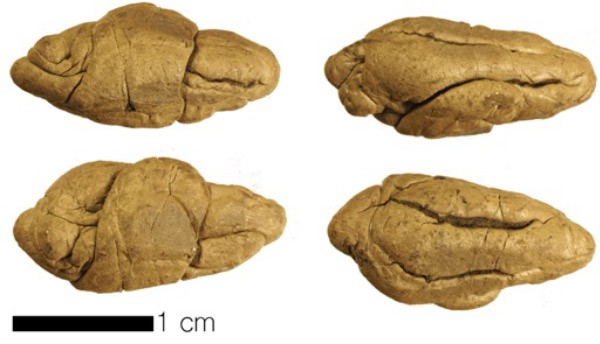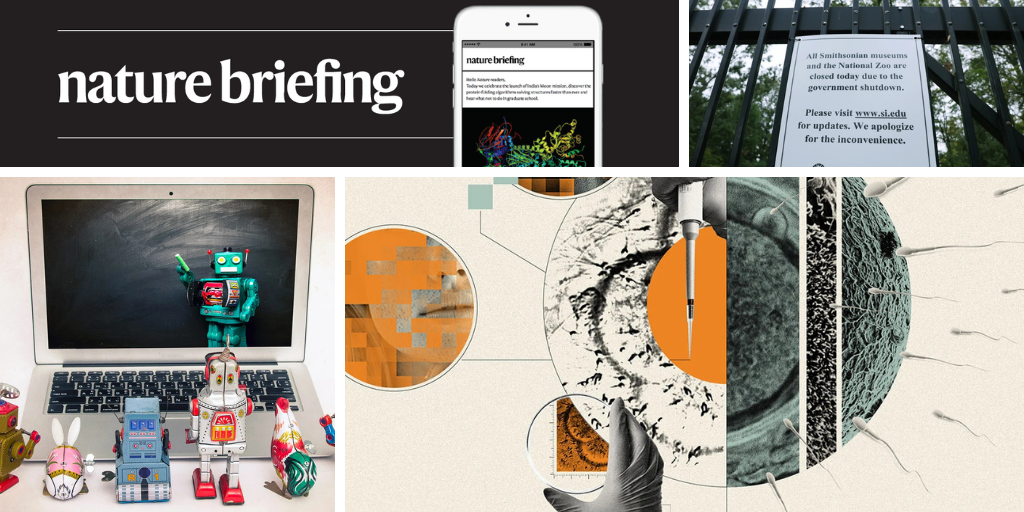You have full access to this article via your institution.
Hello Nature readers, would you like to get this Briefing in your inbox free every day? Sign up here.

The closure of the US government has shuttered the Smithsonian Institution’s museums and zoo and some of its research facilities. Credit: Anna Moneymaker/Getty
As the United States enters the third week of a government shutdown, the administration of US President Donald Trump has cancelled funding for clean-energy research projects and laid off some 1,300 staff members of the Centers for Disease Control and Prevention (although the notices for 700 were quickly rescinded). The activities of some federally funded museums and laboratories have been suspended, along with the processing of grant applications by agencies such as the National Science Foundation. “It feels like getting hit by a car right after you’ve barely survived a train wreck,” said one anonymous agricultural scientist.
Next week will see a first in computer science, with the launch of a scientific conference in which all of the papers — and all of the reviews — have been produced by artificial intelligence (AI) systems. Agents4Science offers “a relatively safe sandbox where we can sort of experiment with different submission processes, different kinds of review processes”, says co-organizer James Zou. The conference draws attention to “the fact that those of us in the AI world need to do a better job at understanding what the strengths and weaknesses are of using systems in this way”, says computer scientist Margaret Mitchell, who studies AI ethics.
Ancient DNA pulled from chewed-up wads of birch-bark tar reveals more about the lives of the people who munched it. The material was used as an all-purpose adhesive, and many of the blobs we’ve found have tooth marks. Thirty samples from Mesolithic and early Neolithic sites in what is now Scandinavia were analysed for DNA, revealing traces of human oral microbes and the remnants of plants and animals such as wheat and wild boar. Several pieces contained human DNA that was recognizably male or female — with the male-chewed tar used to haft stone tools and the female-chewed tar used to repair pottery, possibly indicating which crafts tended to be done by whom.
Reference: Proceedings of the Royal Society B paper

Birch bark tar is “the world’s oldest synthetic material”, write the authors, with the earliest finds dating back to the Middle Palaeolithic period in Europe. Theis Z.T. Jensen et al./Proc. R. Soc. B. (CC BY 4.0)
Features & opinion
For decades, fertility researchers have been studying in vitro gametogenesis (IVG) — the process of growing egg and sperm cells in the lab. IVG could provide a way to test whether drugs cause mutations in gametes and explore the causes of, and potential treatments for, infertility. Such uses are at least fifteen years away, by some estimates. But some researchers and government bodies are calling for regulations that address problematic aspects of IVG, such as the potential to generate genetically-modified babies, to be drawn up before the dawn of lab-grown gametes arrives.
Most carbon offsets, which allow polluters to meet their emissions reductions targets by financing climate projects elsewhere, have “fatal flaws” that stand in the way of urgent progress, argue a group of environmental policy experts. “The complexity and a lack of transparency make it close to impossible for buyers to make informed decisions about the quality of most credits,” they write. “Moreover, many buyers are not incentivized to care.” Instead of credits, the authors suggest that governments fine facilities that don’t meet mandatory emissions-reduction obligations, raising money for programmes that actually work.
To avoid droughts, sinking tundra fields and an overheated planet, we must take action to protect snow, says environmental historian Sverker Sörlin in his new book, Snö. Filled with emotive memories and riveting case studies of the scientists that solved some of snow’s scientific mysteries, Snö is a “thrilling and moving book” writes science journalist Gareth Thompson in his review. With his personal connection to snow made clear, Sörlin offers “a whispering message to anyone wishing to do better for the planet”, Thompson writes.
Today I’m enjoying the news that scientists have discovered the source of a rodent-shaped indentation affectionately known as the ‘Chicago rat hole’. Despite its name, researchers say there’s a more than 98% likelihood that the impression was left by a squirrel. Let it never be said that we’re not asking the hard questions.
If you spot any holes in this newsletter, please let us know at [email protected].
Thanks for reading,
Flora Graham, senior editor, Nature Briefing
With contributions by Jacob Smith
• Nature Briefing: Careers — insights, advice and award-winning journalism to help you optimize your working life
• Nature Briefing: Microbiology — the most abundant living entities on our planet — microorganisms — and the role they play in health, the environment and food systems
• Nature Briefing: Anthropocene — climate change, biodiversity, sustainability and geoengineering
• Nature Briefing: AI & Robotics — 100% written by humans, of course
• Nature Briefing: Cancer — a weekly newsletter written with cancer researchers in mind
• Nature Briefing: Translational Research — covers biotechnology, drug discovery and pharma


